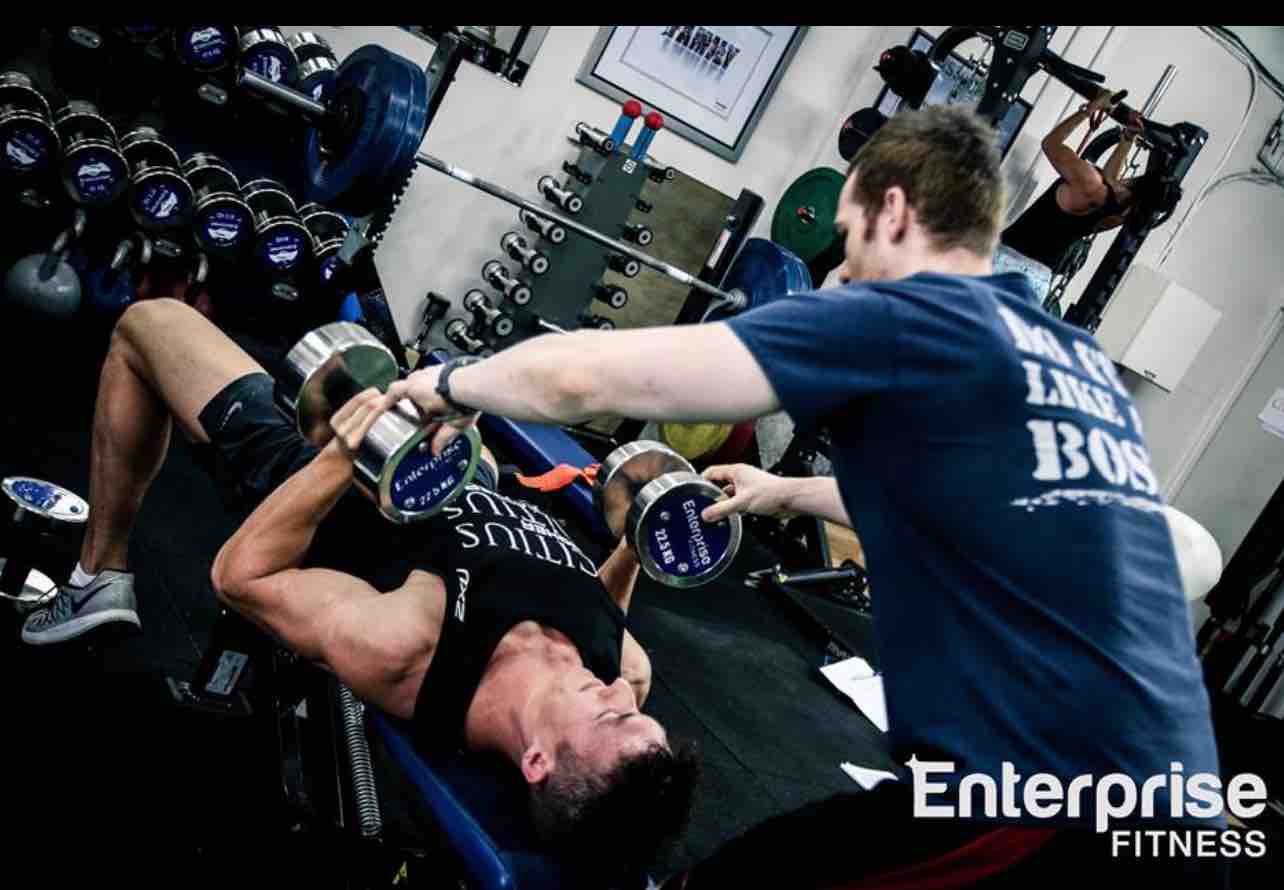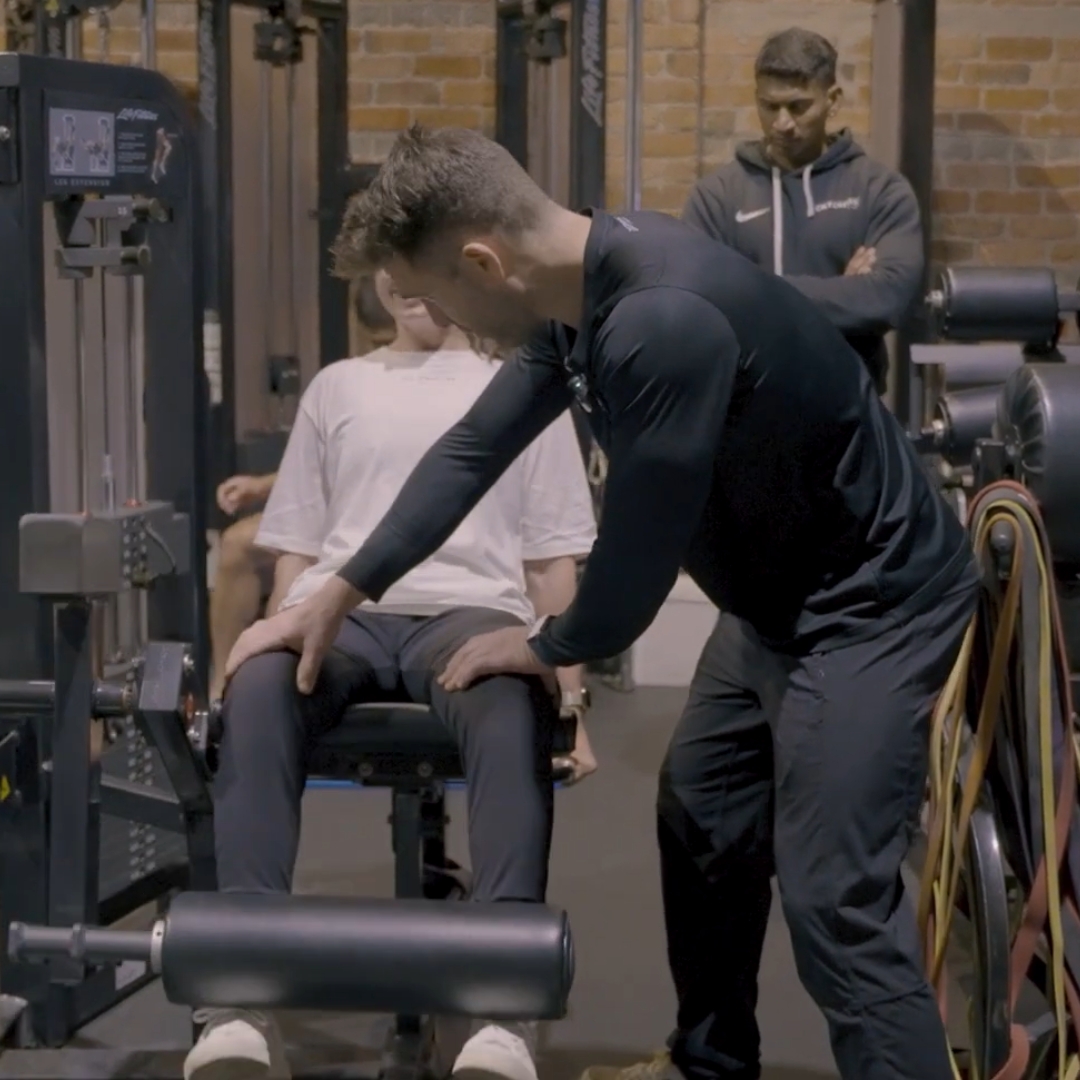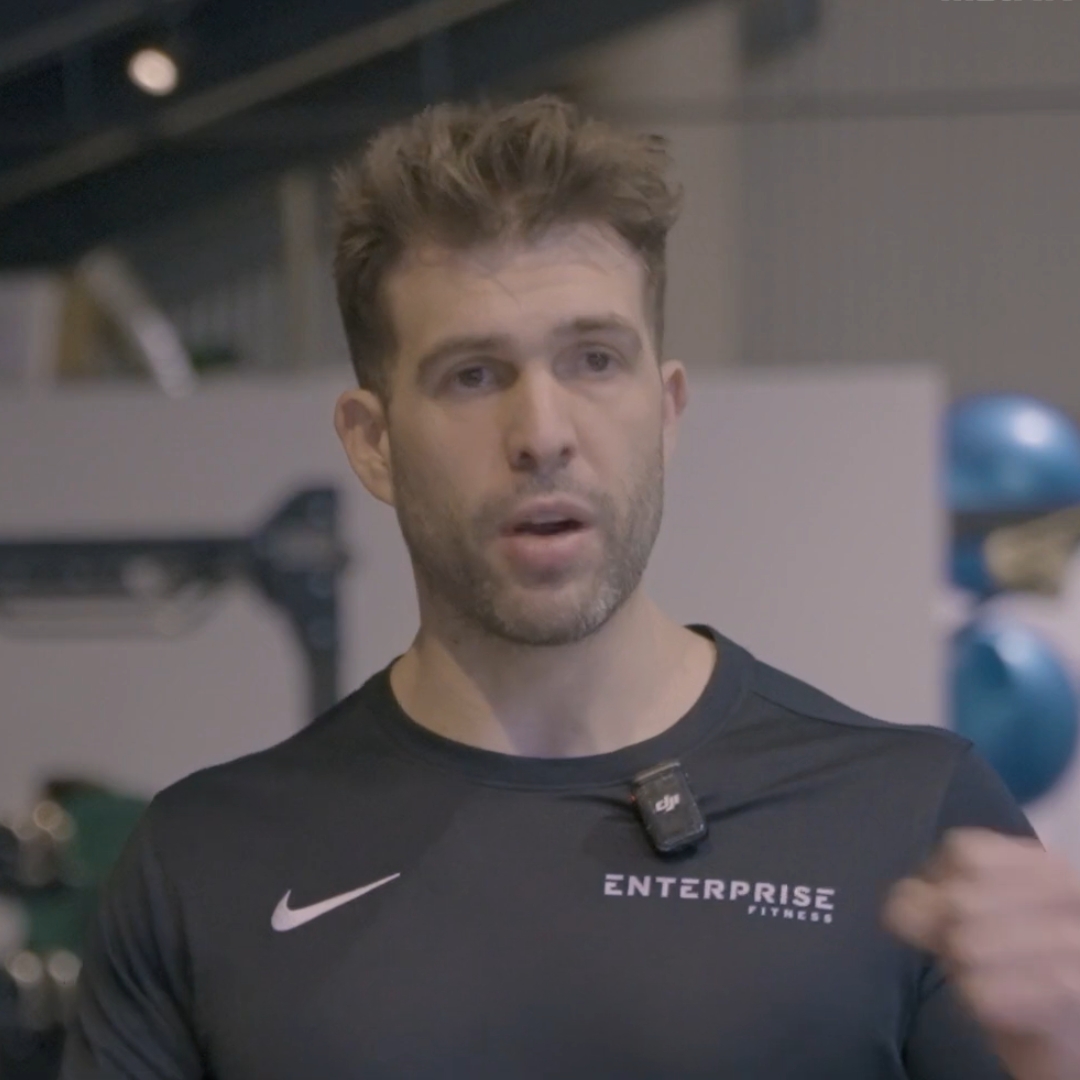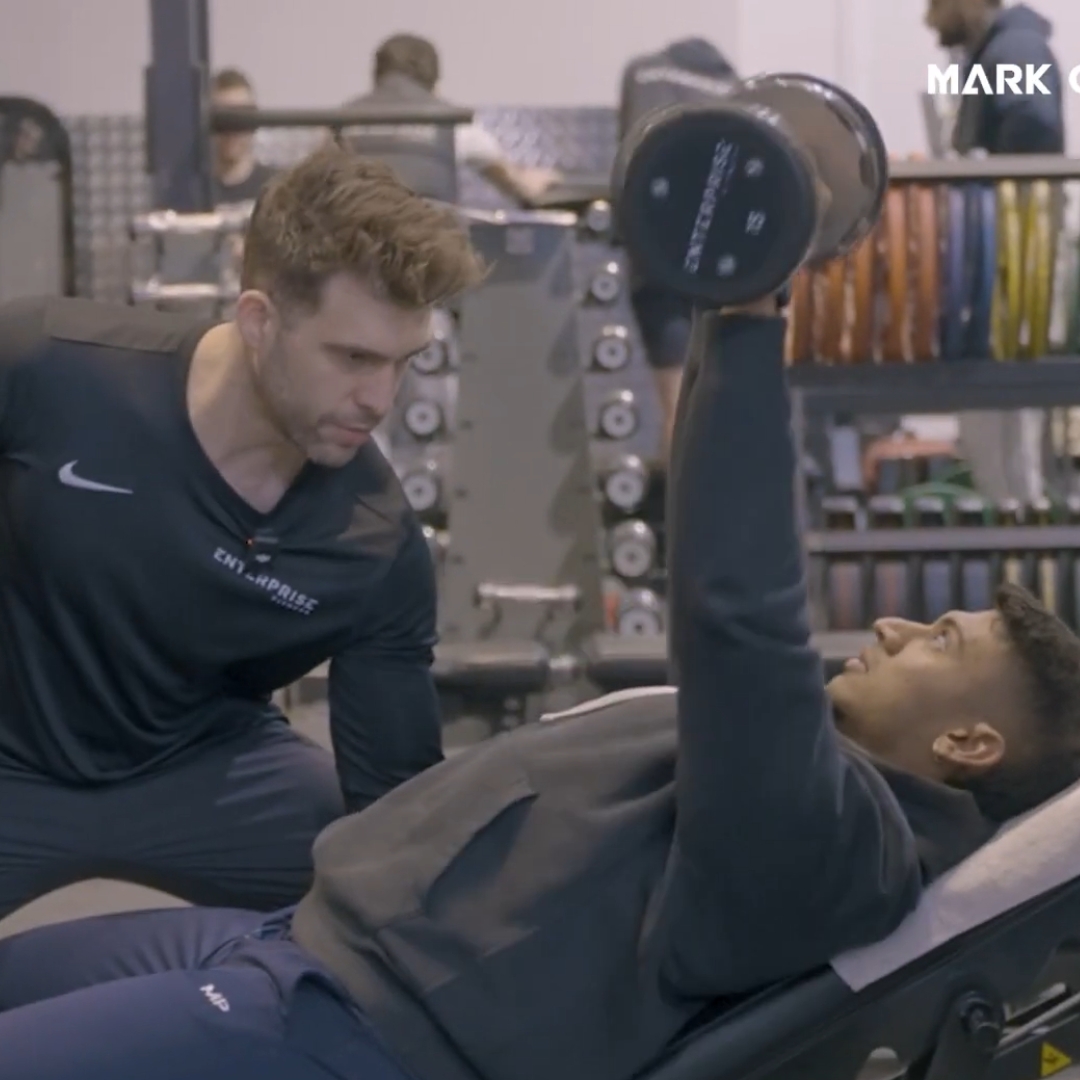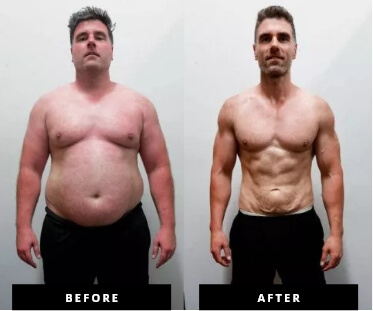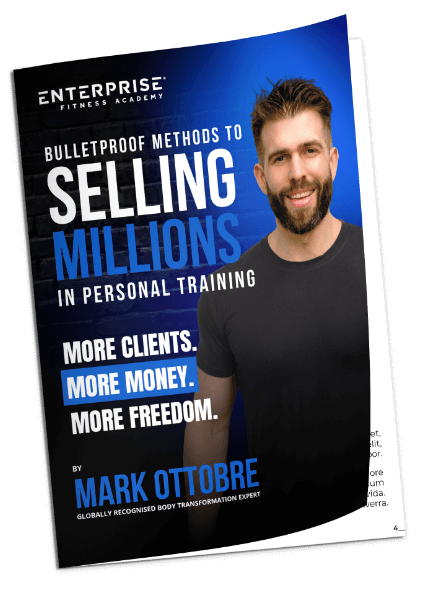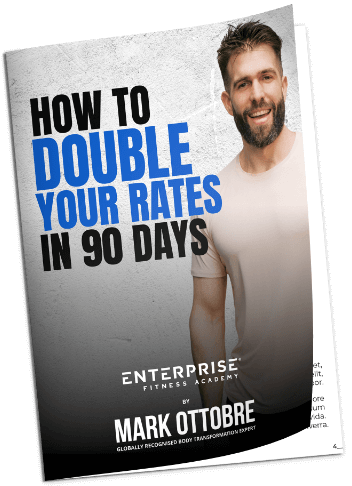Do you know exactly how hard to push your personal training clients?
Because if you don’t…
It can lead to non-compliant clients
Which leads to no transformations
Which leads to poor client retention
Which leads to you losing income
So pay disturbingly close attention to what I’m about to say because your income depends on it!
Transcript From How Hard Should You Be Pushing Your Clients
(This transcription may contain errors)
Hello folks. My name is Mark Ottobre, owner and founder of Enterprise Fitness and creator of the Wolf Pack Mentoring Program for personal trainers. In this video, I’m going to be teaching you how to go from being a good personal trainer to being a great personal trainer. The topic for this video is How Hard Should You Be Pushing Your Clients? What an interesting topic, because it’s not spoken about a lot. So let’s jump in.
How Hard Should You Be Pushing Your Clients?
I want to start with a story as I often do. In 2007, I was on the gym floor and I saw this lady struggling and I went up to her and I said, “Hey, would you like a hand? I’ll help you with this exercise.” It was a chest press exercise and I helped her with it and at the end of it, I said, “Hey look, you keep moving to one side. Why is that?” She said, “I have Parkinson’s disease.” Oh, okay, that’s interesting. I thought, well, I’m going to train someone with Parkinson’s disease, so I said to her at the end of it, “Hey look, I’d love to book you in for an introductory personal training session.” This was at Genesis Ringwood back in the day. “I’ve got two times available, Monday at 3:00 or Tuesday at 4:00. Which of those times best suits you?” I think she picked Tuesday. Great, booked her in.
Did a session with her. At the end of the session I said, “Hey, would you want to continue?” She said, “Yes.” With someone like her, how hard can I push her? Well, compared to say Janet Kane, the full-time Miss Australia, not very hard, probably a minus 10. If Janet is 10, what would she be? I couldn’t push her very hard at all, but that’s to say her 10 was a different 10, so you got to understand the differences between people and perceived exertion and perceived how hard. So some things that you want to look at, there’s a few different ways you can answer this.
You can answer this from an athletic lens of purely talking about bar speed versus a more esoteric lens of everyone I think is doing their best, and challenging them on a constant basis, because pushing them doesn’t just mean pushing them in the session, it means also pushing them mentally, spiritually, emotionally to the point where they’re getting the best out of themselves. Because ultimately, we’re coaches, and I’m sending previous videos, one of my mantras in PT or in any type of coaching, whether I’m coaching a personal training client or coaching a personal trainer to be a better business owner, I speak to people like they’re champions. If someone doesn’t raise to my standard, I call them out. I call them out because I believe in them, and sometimes that can look like I’m being a “prick.”
But, it’s because I care. I give a damn. I give a damn about the person, but I also give a damn about the people who work with me because people who work with me become successful, and I want that to stick, and the way I’ve got to do that is to make sure that people jump into my frame and I’m giving them everything of me. If they’re not doing everything that I need them to do, I call them out on that. Okay. How hard to push people? You got to become a master at reading people and know when to back off and know when to push them. I want to analyze this in a few different ways. But first, let’s start with the easiest one, which is a tangible. When you’re working with an athlete, how hard to push them inside the gym?
Well, there’s a concept called bar speed. I’m not sure if you’ve heard of it, some of you guys may watching this video have heard of it, but you know an athlete, you know a competitor, you know your client, how well they normally move and you look at, let’s say they’re doing bench press. How fast do they move an empty bar? Is it straight up or are they struggling with an empty bar? Because the slower they move, you know that the slope of the bar moves means they’re more, they’re nearing to their max RM or their max percentage. Let’s say for example, we’re on the bench press and we’re doing 10 reps and by the eighth rep, it starts moving slowly and then by the 10th rep, it’s like super slow, probably they’re not going to get 11 reps. You want to rack it there and then, so there’s BA speed.
Now, how hard to push people? Very interesting question. Mentally, I believe that I never give people more advice than what they’re willing to take on or they’re able to demonstrate. The mental factor is this. If I give you a command, let’s say it’s in business, right? And I say, look, I need you to study up on sales and then send me an email at the end of the week reviewing everything that you’ve learned and you don’t do that. Well, guess what? You don’t earn the next piece of advice, and you might come to me and say, “Look, I want you to teach me about sales.” I say, “That’s great,” so I don’t get angry. Say, “Remember that task I sent you?” Say, “Oh, no, I forgot.” “Well, if you check your emails, I sent you a task and it was I want you to review these videos and send me your review.” “Oh yeah, I remember that one.” “Okay, well that’s what you got to do.” “Oh, oh yeah, I forgot.” “Okay, well don’t forget. Set a reminder on your phone.”
Let’s say it might be three weeks before you do it. Well that’s I’m going to push you at the level you’re able to conceive, if that makes sense. The ability, so the same thing with clients. I might give a client an instruction with nutrition and I come back and say, “How’d you go eating eggs in the morning?” “Oh, I haven’t done that yet.” “Okay, great. I’m not going to give you any more advice until you do that.” It’s all a compliancy trail. It’s almost like this concept of dog training, right? Very early on.
If you’ve got a little puppy, if you don’t set rules for the puppy, the puppy quickly becomes the master. The puppy quickly realizes that it’s in control of its owner, whereas if you’ve got the puppy, you set clear expectations, you train the dog on the how to do, where to do. It’s the same thing with your clients, same thing in any coaching relationship, is you need to set up the frames of responsibility and actions so that people are jumping through your hoops, and you can do it in a very compliant manner. It can become very systematic and almost robotic, is they’ve earned this, all right, next phase. They’ve earned this, next phase. They’ve earned this, and you go on a chronological. All pushes of how hard you can push someone needs to be chronologic. In saying that, how do you get a Janet Kane, who will go the umpth degree of everything and push themselves probably too hard to the point where it actually can be detrimental.
Well, that also presents a different problem. But in saying that, again, it’s about compliancy. It’s about connecting that person to their goal and then slowly educating them on the things that they need to do and as you’re educating them, they need to be demonstrating evidence of them being successful in these things. If you’re not doing what you’re told, then they don’t earn the next ring and they might get shitty at you and say, “Oh, well I want more advice.” My answer to that is always simple, “Earn it.” If you want more advice, you got to do step one. You’re asking me for step five, you haven’t done step one. Do step one, I’ll give you step five. Let’s see it. Then, they start to realize, “Oh shit, I’ve got to work for this guy.”
The other thing is a reward effort, right. Don’t reward. If someone lifts 200 kilos or 50 kilos, it doesn’t matter in my gym, doesn’t matter at Enterprise. It’s the effort that people put in, so you want to reward hard work, not talk and chatter, and you also want to reward when people do achieve their goals, but more importantly because when you award effort, it says to the person, yes, this is fair. If I keep working hard, I’ll get my results.
I hope you’ve enjoyed this video, a bit of a different topic in this video. As always, Wolf Pack is a party of education fun. A lot of guys who joined and girls who join Wolf Pack end up having the closest relationships actually inside of the group because everyone if of a like-mindedness in terms of that. It’s a great program. Check it out. We run four seminars four times a year. We have the Netflix of personal training available at your fingertips on our member’s site.
You get monthly group calls with me, which are two hours long, which are ask me anything calls. There’s one one-on-one call with one of our Wolf Pack coaches every single month. The courses, special guests from all over, and the online content, we’ve got our weekly e-classes now that gets sent out. It’s a phenomenal program. If you need a hand growing your PT business, reach out. I’ve done it. I’ve got my PT business unlike a lot of these other mentors. They don’t have a personal training business. Check us out, personaltrainermentoring.com till the next video. Train hard, supplement smart, and eat well.
Related Posts
